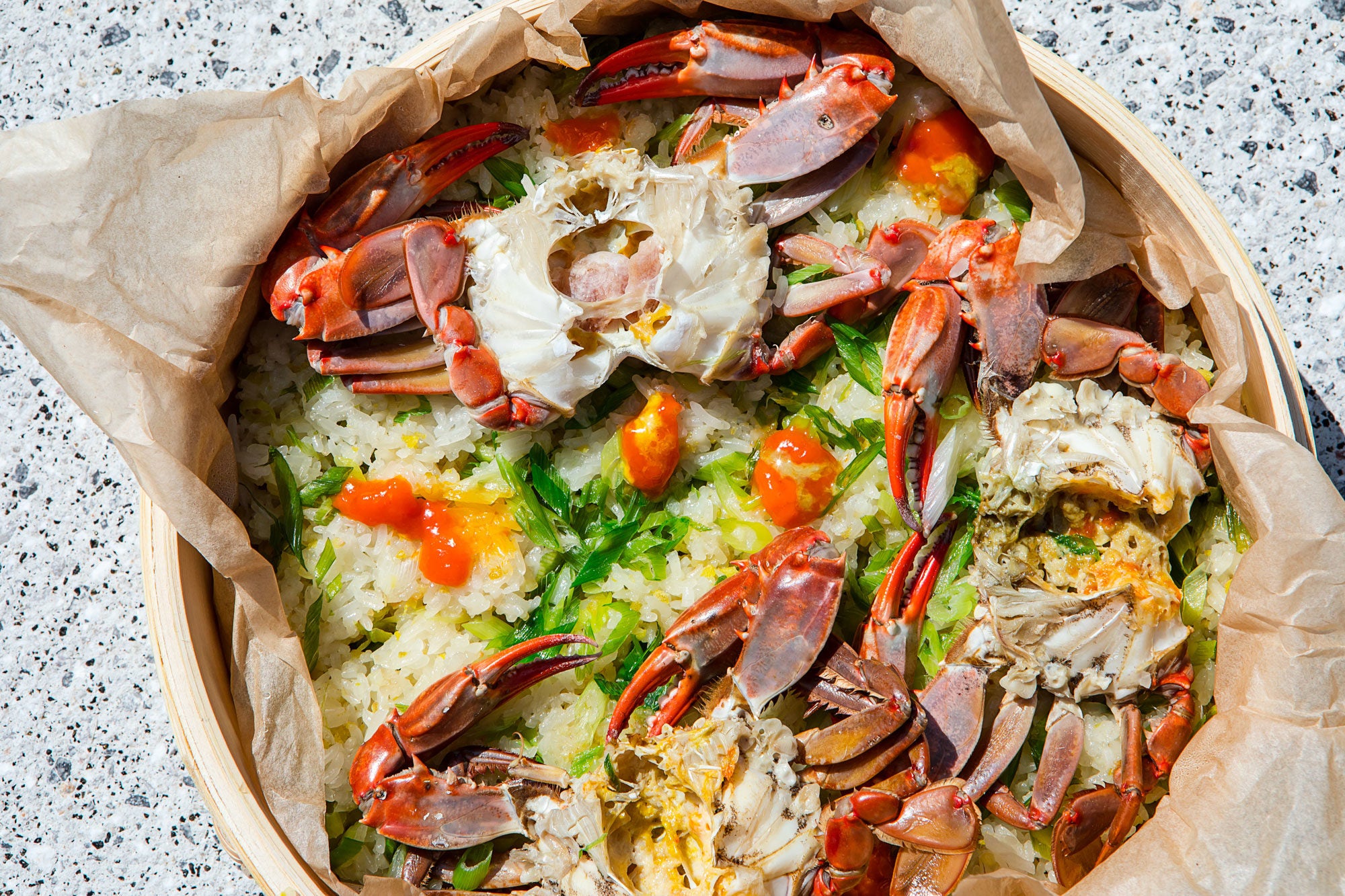
Steam your sticky rice with a whole lot of whole crab.
Sticky rice can often be spotted covered in a deluge of creamy coconut milk with spears of mango on top, or mixed with fatty bits of lap cheong and earthy mushroom and neatly wrapped with fragrant lotus leaves. But if it were up to me, I’d always choose to eat it freshly steamed, topped with crab, and coated in a sheen of buttery, oceany juices.
Up until recently, steamed sticky rice with crab has been something I’ve only eaten at Cantonese restaurants where you can point to the crab you want to eat in the tank. Open up an entrée-size bamboo steamer, and it’ll reveal lung jai jing hai no mai fan, a Cantonese specialty of aromatic glutinous rice steamed together with a whole crab. Firmer and stickier than the usual white grain, glutinous rice makes for a perfect layer ready to soak up oceany brine with a more toothsome bite. Tender bits of fluffy crab meat—often from a large Dungeness meant to feed a crowd—are coaxed out of their shell to punctuate savory, allium-heavy rice. The whole thing is varnished with silky crab butter (sometimes referred to as the crab’s mustard or roe)—the creamy yellow innards revealed when the body is cracked open.
As with most large-format shellfish, I assumed at first that this dish would be too involved to bother with in my own kitchen. But after upgrading my tiny six-inch steamer to a larger ten-inch-wide one, making a pit stop at the fish market, plus an overnight soak of the sticky rice, – was on my way to fragrant, crustaceous bliss.
Dissecting what was placed in front of me on a Lazy Susan, each element became more homey and realistic, and less like a specialty dinner order. The flavors and ingredients are in plain sight—glutinous rice, whole crab (whatever’s in season where you are), and the ginger-garlic-scallion trifecta. As for the technique, it doesn’t require much more than a steamer for the rice on one burner and a frying pan for the aromatics on another.
After straining the sticky rice from its overnight soak, it’s placed on a parchment-lined (or, traditionally, lotus-leaf-lined) steamer for a 30-minute steam to give it a head start. In the meantime, test your shellfish skills by brushing the whole crab clean before detaching the body from the shell and separating the legs to neatly nestle inside the steamer.
The par-steamed rice can be tossed with fried ginger and garlic, raw minced scallion, and salt before finally being topped with crab—essentially arranging its broken-up pieces to look whole again. Fifteen more minutes of steaming will reveal a bright orange shell and legs ready to be cracked open, with sparkling grains of sticky rice slicked with garlicky oil, and a lump of golden crab butter with a soft, luscious flavor no shelf-stable condiment jar could ever replicate.
Sure, it’s not as hands-off as throwing some rice into your countertop cooker and waiting for a light to flash done. It takes a bit of planning the night before, and you’ll have to get your hands dirty to both prepare the crab and fish out the meat. But that first bite of roe-laden, garlic-tossed sticky rice makes you forget all about that.